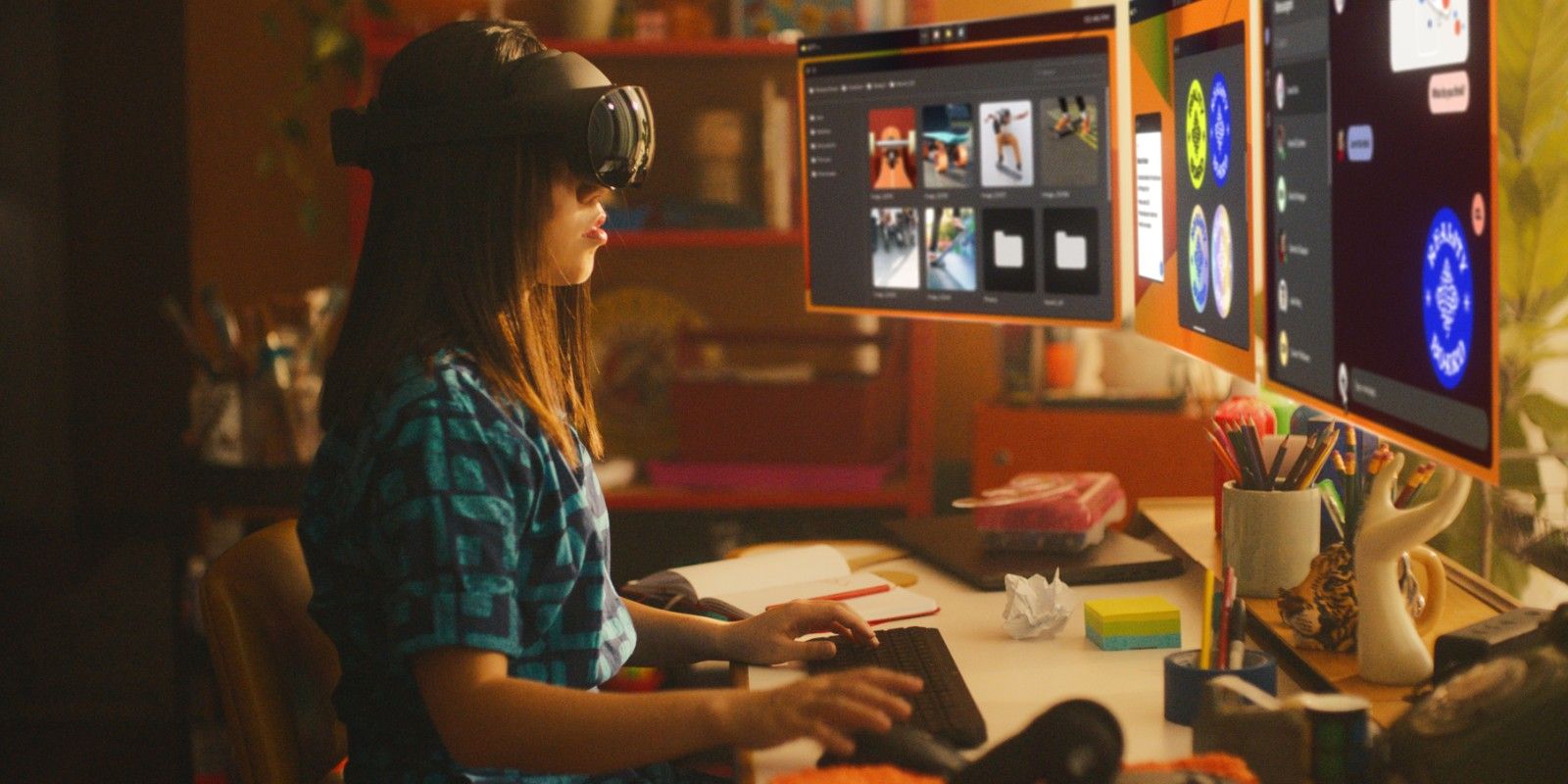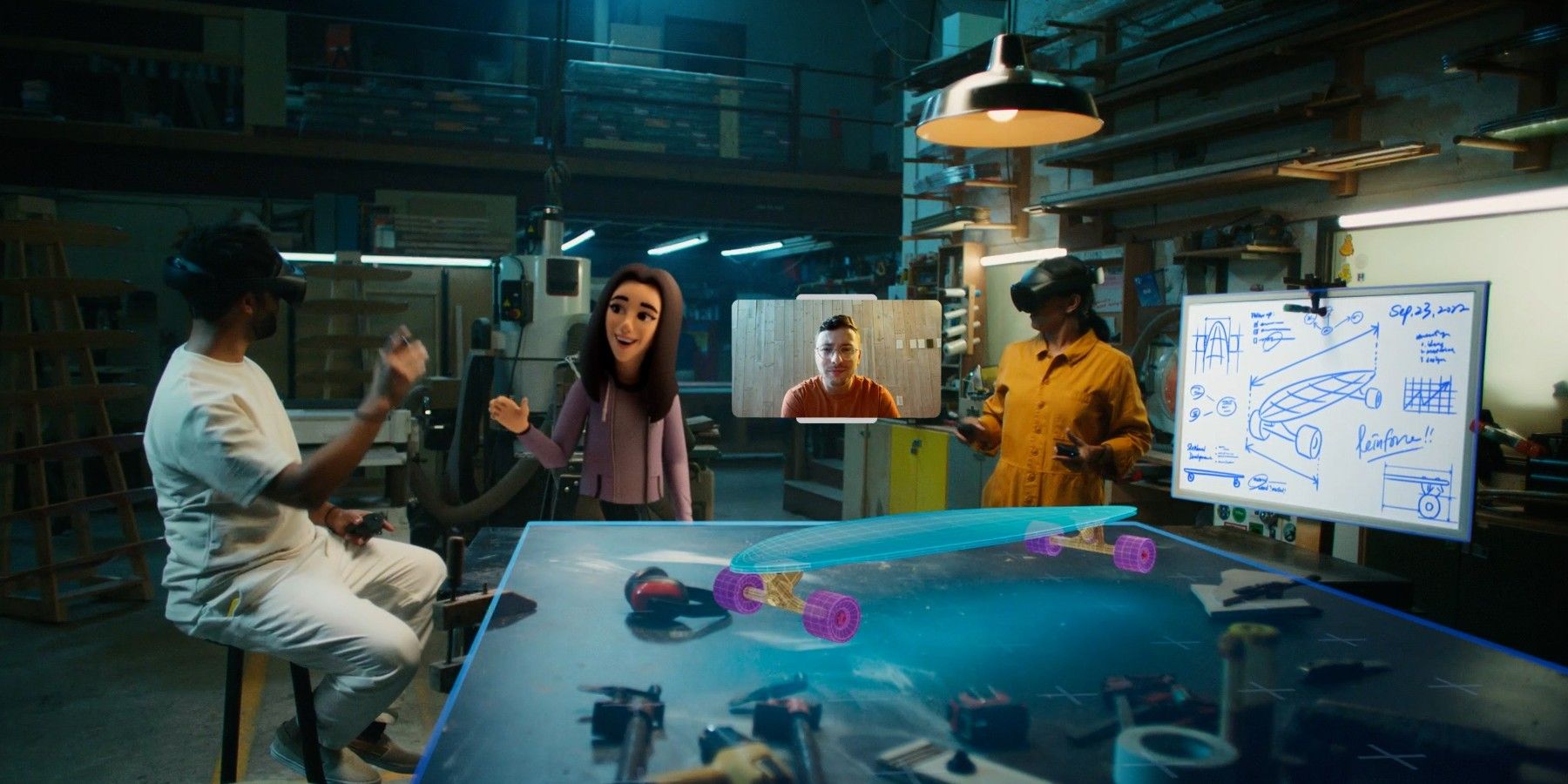At its Meta Connect event, Meta provided details of what a VR work environment could look like for users with a VR headset like the Meta Quest Pro. In 2021, Meta announced Horizon Workrooms which allows people to work together in a virtual room. While it designed for VR, there is also a web version that can be used by users without a VR headset.
Workrooms allow users to bring their work desk into VR. With a compatible keyboard and the remote desktop companion app for Mac and Windows, users can access their computers even with their headsets on. They can also choose to share their screen and bring files they need into the VR environment.
Anyone picking up the Meta Quest Pro can make use of Meta Horizon Workrooms, which is the VR space created for teams to collaborate. As expected, a user would need to have an avatar, however, a new addition is support for more expressive avatars. Thanks to the inward-facing sensors in the Meta Quest Pro, there is now support for eye tracking and Natural Facial Expressions. This will allow avatars to show non-verbal cues such as eye contact and facial expressions which can be important when working with people.
Partnerships With Microsoft, Adobe, & Autodesk
Another upgrade to Horizon Workrooms is the ability for a large team to break up into smaller groups within the same room for collaboration. With the Meta Quest Pro's support for spatial audio, users will be able to clearly hear their team or "breakout group" as it is officially called, while conversations from other groups will serve as ambient noise just like in the real world. Think of it as a group within a group. To further enhance productivity and help with brainstorming, users will be able to turn any free space in their environment into a virtual whiteboard where they can pin sticky notes containing ideas or points raised in a meeting. And unless removed, the notes will be there the next time a user logs in to the workroom.
Meta has also announced that Workrooms will have support for Zoom in early 2023 while its partnership with Microsoft will also allow users to join a Teams meeting from inside a workroom. Microsoft is also bringing the Microsoft 365 experience to the metaverse, which includes Sharepoint as well as Word, Excel, PowerPoint, and Outlook to the Meta Quest Pro and Quest 2 headsets. Teams' immersive meeting experiences will also be available for Meta Quest. In 2023, Meta says Workrooms will support the ability to view 3D models which will be a major benefit for designers, architects, and creatives. Finally, Meta plans to add a new type of room called “Magic Room” in 2023. Unlike Workrooms which is purely VR, this is a mixed-reality experience that allows people in physical locations to collaborate with those working remotely.
Of course, group meetings are only a part of one's work, as most times a user will be working alone. Thankfully, Meta has also made some changes to solar workrooms starting with the ability to use up to three virtual screens and the choice of four personal work environments. Microsoft has also partnered with Adobe to bring its Substance 3D apps used by 3D creators and designers to the Meta Quest Pro and Meta Quest 2. Users will not only be able to model 3D objects but also collaborate with others on projects in VR. It will also bring Adobe Acrobat to the Meta Quest Store which adds support for viewing and editing PDFs in VR. Autodesk will also update its collaborative design review app to take advantage of the new features of the Meta Quest Pro.
Source: Meta


